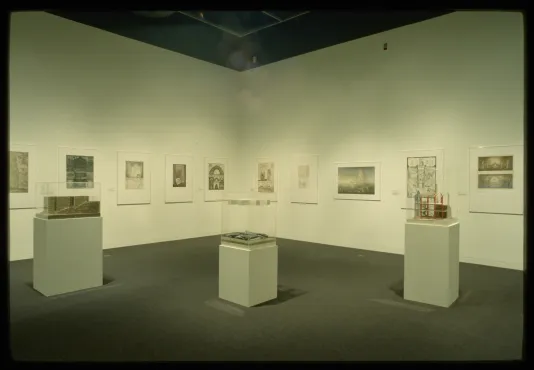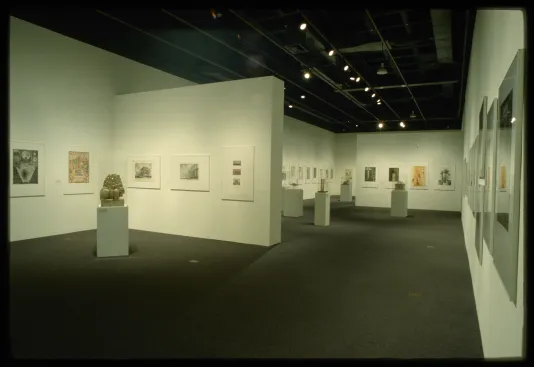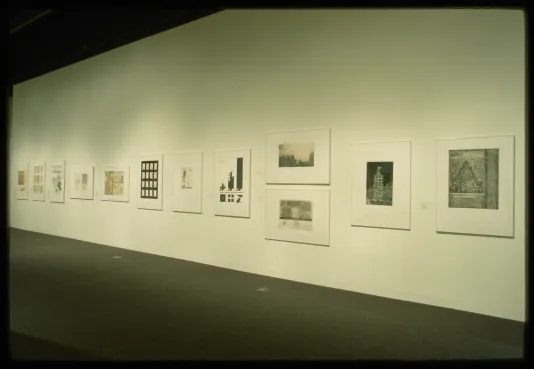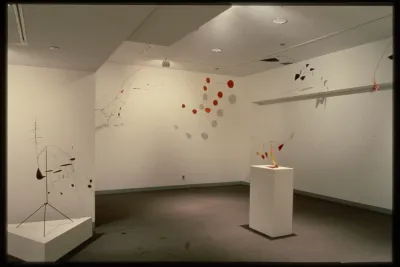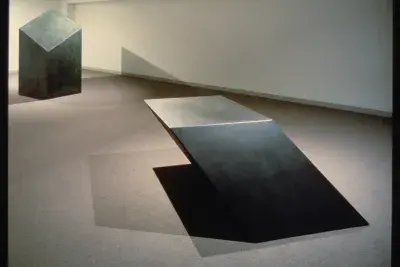Installation view, Paper Architecture: New Projects from the Soviet Union, MIT List Visual Arts Center, 1990.
Paper Architecture: New Projects from the Soviet Union
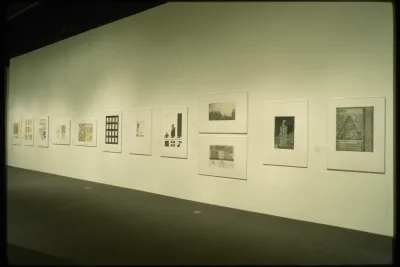
The “Sublimation of Despair” is what the poet Andrei Voznesensky called this exhibition of recent architectural drawings and models from the Soviet Union.
Seen for the first time in the United States, the nearly 100 works on view by 25 contemporary architects date from 1979-1989 and represent schemes which were never intended to be built. Rather, the personal and often ironic drawings comment on the frustrating stagnation of architectural practice during the Khrushchev and Brezhnev years.
In 1957 Premier Khrushchev abolished the Academy of Architecture, rejecting the grandiloquent and idealized architecture favored by Stalin, instigating instead mass-produced, industrialized and prefabricated structures allowing no scope for the individual architect’s imaginative vision. During the Brezhnev era, bland and monolithic fortifications of state-owned enterprises continued to disfigure the cityscape. In reaction to this repression of architecture containing “ideanost” or idea content, a small group of Soviet architects, mostly from the Moscow Institute MArhkl, began to enter international competitions sponsored by various architectural publications and institutions. The architects worked in small groups on their own time, creating “paper architecture” on themes such as “The New Japanese House” or “A Public Park for Paris.” At first the paper architects entered just for the fun of it, but became more involved as favorable responses and prize monies began to come their way. As the Soviet architects focused more seriously on their entries, they began to address their situation at home, specifically the desperate need for reinvigoration and change in the Soviet architectural community. By the 1980s it had become a serious movement. According to one Soviet architect, “because of perestroika and glasnost, architecture is now being rehabilitated; paper architecture was important to shake up the architectural bureaucracy.”
The work ranges from romantic, nostalgic evocations of past styles to sardonic, even cynical commentary on improbable monuments. Whereas some of the drawings share the optimistic aspirations of early 20th-century Soviet Constructivist graphics, others evoke darker, more foreboding conditions.
Sponsors
The exhibition was originally organized by the German Architecture Museum in Frankfurt, Germany, together with the Soviet Architecture League. It will tour to several other American museums. Generous assistance has been provided by Lufthansa German Airlines.

